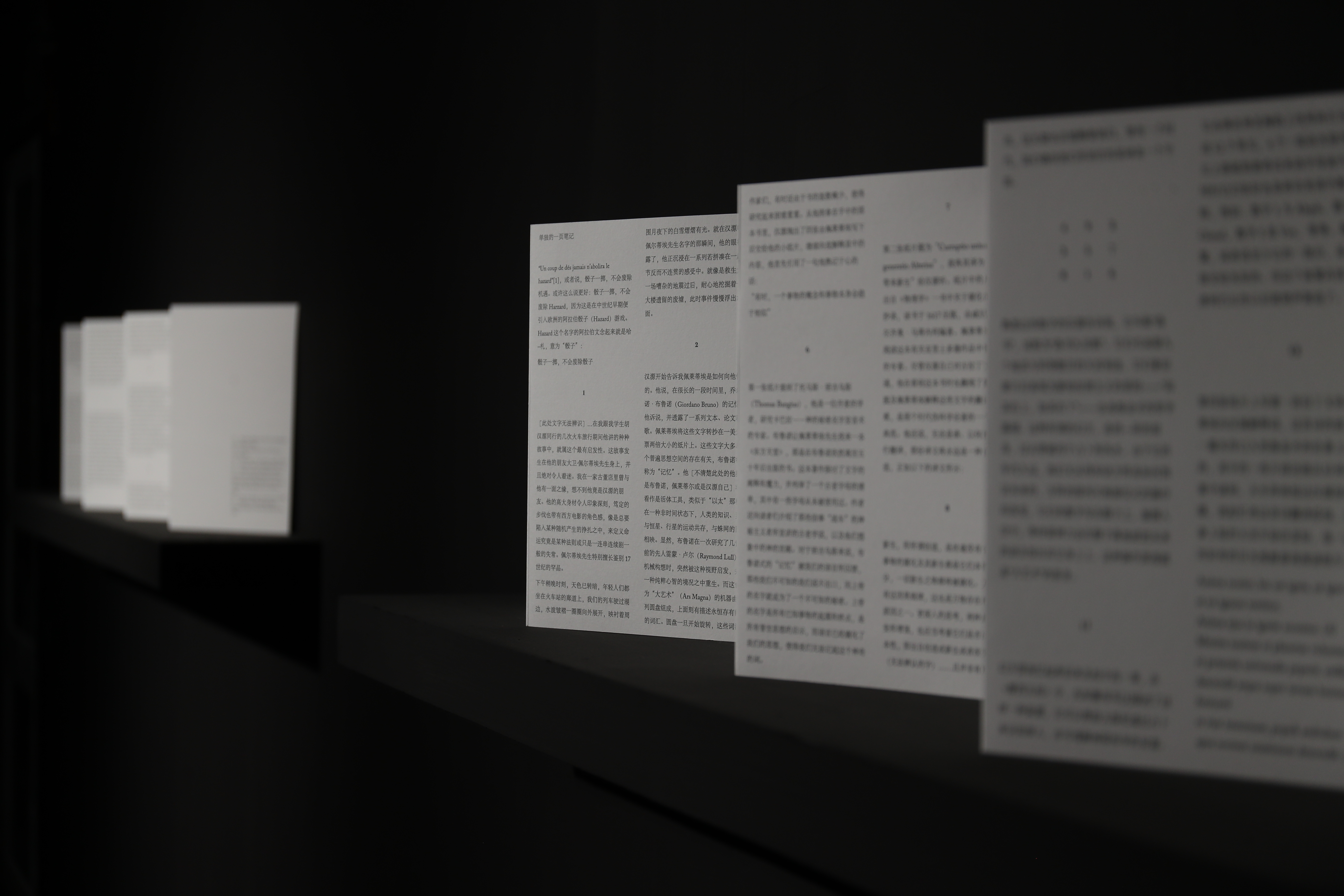

Curatorial Concept:
A woman bursts into a state of frenzied dance on the street. Within the next month, four hundred more follow. This mass hysteria, which engulfed Medieval Europe between the 13th and 17th centuries, was later named Dancing Mania or the Dancing Plague. In the centuries when it was prevalent, this “popular art”—dancing—took on the appearance of a contagious disease, liable to spread, lethally, through mimetic acts—in paroxysms that erupted without warning, only to vanish as mysteriously as their origins. Such strange tales of mass hysteria as contagious disease throughout history have led to scholarly investigations as to what “lay behind”—the unconscious, that fertile ground for psychoanalysis. Carl Jung developed his theories based on primal psychological mechanisms found in anthropological texts: people develop spiritual connections to objects in the natural world; these early figures become archetypes for the collective unconscious. This collective unconscious, in turn, arouses an unconscious identification that can induce a state of participation mystique.
Participation Mystique attempts to stir up a complex, unsettling atmosphere between the exhibition space and the viewer, the stimuli and their recipient. As with the experience of transference between therapist and patient, whereby both parties are temporarily fused in a phantasmagoric atmosphere resulting from the projective identification, the audience enters Ming Contemporary Art Museum—housed in a former paper machine factory—can also find themselves in an unconscious conjunction with the exhibition. Participation Mystique features fourteen artists with their respective projection of an imagined self onto a lack. Such imagination often bepeaks deep, painful misconceptions, akin to phantom limb pain, or triggers strange and mesmerizing pareidolia; the desires it reflects serve as the pathways for transference between work and audience. Here, dream and memory replace the mirror to become the medium of desire, while their narratives—meshworks of the fictitious and the real, the fantastic and the authentic—restage and allude to the absence of desire. This is intention infinitely approaching, without ever touching, its object-cause.
One might find a possible explanation of mass hysteria in René Girard’s analysis of mimetic crisis. According to Girard’s influential theory, rivalry and conflict arise precisely from the diminishing distance between the subject and the mediator of desire. In this structure of desire, mimesis triggers a series of actions, forming two vectors, approaching one another asymptotically: on the one hand, closeness, attachment and adoration; and, on the other, empathy to the point of vicarious trauma. The exhibition seeks to reproduce these intensifying affective linkages, allowing them to rise and clash with one another through the works on display, thereby illuminating various, drifting forms of desire.
Today, our reservoir of desire is not simply the unconscious mind. Participation Mystique situates itself within this reconfiguration of desire. In this immense mirage of their making, the artists use various sensory perceptions to tease out our desire, allowing us to be in touch with the pain and excitement of loss, accident, damage and violence, thereby recognizing the profound spiritual ties between us and the world.









一位妇人在街头狂舞不止,并在一个月内引发了近400人的仿效。这是席卷中世纪欧洲的一场集体歇斯底里危机,人称舞蹈狂热(Dancing Mania),又称舞蹈瘟疫(Dancing Plague)。在其持续的4个世纪之中,舞蹈——这种大众艺术间歇性地成为一种难以溯源的传染性疾病,在人群中引发足以致命的仿效,持续至17世纪才神秘结束。如此历史上有关集体癔症或是传染病的奇闻怪谈,引发不少学派对其“背后的东西”——无意识作为精神分析的样本。卡尔·荣格的研究参照了人类学文献上的原始心理机制:人们对自然界的物件产生普遍的灵性链接,这些原始意象是为集体无意识的原型。而集体无意识的表达总能造成一个无意识身份认同,从而出现神秘参与的状态。
展览《神秘参与》寄希望于调动展场和观者、刺激物与受体之间混杂不安的气氛。正如治疗师与患者在移情体验中,双方通过某些集体无意识的投射性认同,制造出幻想的氛围,并短暂地产生一种危机潜伏的融合那样,观众进入明当代美术馆——在这个前身为造纸机械工厂的腹腔之中也与展览本身进行着一场无意识的化合(conjunction)。14位(组)参展艺术家的创作在某种程度上都向着一种“空缺”投射自己的想象。这种想象也许是承载着痛感的激烈误会(例如:幻肢疼痛),或是诱发了离奇美妙的“空想性错视”(paredolia),这一种经想象而反观到的欲望将链接作品和观者之间的移情轨迹。在此,梦境和回忆替代“镜子”成为欲望的中介,虚实交错、亦幻亦真的叙事重现也暗示了某种欲望的缺失——意欲贴近又无法真正触及。
而集体歇斯底里所产生的危机,亦可从勒内·吉拉尔所称的“模仿危机”中找到论证的线索,在其“欲望的本质是模仿”的著名理论中,敌对与冲突正是从两个足够接近的欲望主体和介体之间引发的。在这个欲望机制之下,由模仿引发的一系列表现行为:接近、依恋、崇拜、共情直到替代创伤,扮演着两条越驶越近的轨道。展览现场也试图还原这一系列渐强的情感链接,并通过艺术家的创作在展场中逐个跳跃、发生碰撞,齐齐指向漂浮的欲望形式。
如今欲望的蓄水池不仅仅是我们脑海中的潜意识。展览《神秘参与》利用幻想穿梭于这场欲望的再组之途。在这幅巨大的幻景之下,艺术家们利用各种官能性的方式诱发欲望,提供观众以投入自身的方式去接近那些因遗失、意外、毁坏、暴力所带来的痛感和刺激,认识我们和世界复杂的精神联结。
